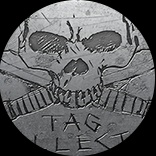The Immersive Gameplay and Dynamic Environments of Battlefield 4
Battlefield 4 is widely regarded as one of the best multiplayer shooters of all time, and a large part of its success is rooted in the immersive, dynamic gameplay experience it offers. One of the game’s most defining characteristics is the vast, open-world maps that provide players with an enormous amount of freedom in how they approach each battle. These maps are not just static arenas; they are living, breathing environments that offer a level of interaction and dynamism rarely seen in other first-person shooters. Whether you're engaged in an urban firefight in the congested streets of Shanghai, navigating the dense jungles of the South Pacific, or fighting across a frozen, desolate Russian landscape, each map is uniquely designed to challenge players in different ways. Every map offers a combination of wide-open spaces for vehicle combat, tight corridors for infantry battles, and chokepoints that encourage strategic positioning, ensuring a balance of tactics between different playstyles.

One of the core features that elevate Battlefield 4 above its competitors is the game’s environmental destruction, which makes the world feel alive and reactive. Using the proprietary Frostbite 3 engine, Battlefield 4 introduced a level of destructibility that allowed entire buildings to collapse or environments to be altered by gunfire, explosives, and even vehicles. In particular, the ability to bring down skyscrapers, bridges, and other large structures adds a sense of unpredictability to each match. The most iconic example of this is the "Levolution" feature, which allows players to trigger massive environmental changes on the map, such as the demolition of a high-rise building or the flooding of a city. These changes impact the battlefield significantly, altering tactics and requiring players to constantly adapt. A well-timed attack can change the layout of a map entirely, forcing both attackers and defenders to adjust their plans on the fly. For instance, in the Shanghai map, players can destroy a skyscraper, changing the layout of the urban environment, opening up new paths for attackers, and shifting defensive lines.

 100
Play
100
Play
Another significant aspect of the gameplay experience is the inclusion of different game modes that complement the variety of maps and environments. Battlefield 4 offers a range of game modes that can appeal to various playstyles, from the large-scale, objective-based Conquest mode to the more tactical and team-oriented Rush mode. Conquest, one of the most popular modes in the series, has players fighting for control over different points on the map, using a combination of infantry, vehicles, and aircraft. The mode encourages coordination and teamwork as players must constantly secure, defend, and retake objectives while managing limited resources. In contrast, Rush focuses on a more linear progression, where one team attacks a series of objectives while the other defends. Both modes require different strategies, making them engaging and diverse in terms of gameplay. These modes, combined with the large, varied maps and destructible environments, ensure that Battlefield 4 offers a gaming experience that is rich, varied, and unpredictable, setting it apart from other


